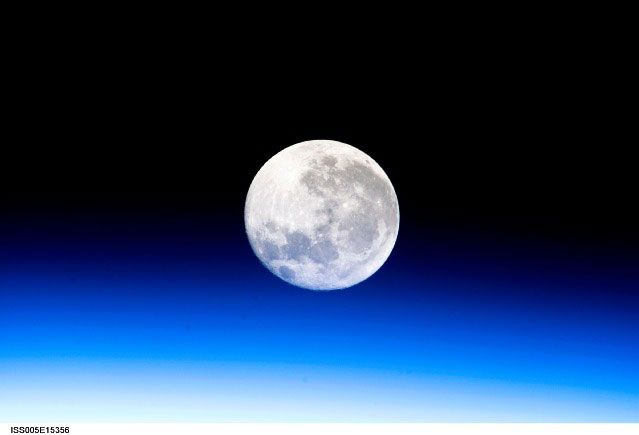Today's 'Extra' Full Moon is Last of 2012

Today's final full moon of 2012 is a somewhat rare occasion: It's the 13th full moon of the year.
That's a little odd, given that there are 12 months in a year, and months are based on the lunar cycle. But extra full moons happen periodically, because the moon's phases don't line up perfectly with our calendar. In fact, the moon takes just over 29.5 days to go from full to new to full again. Do the math, and it turns out there are actually 12.37 lunar cycles each year — just a smidge over an even 12.
That means that occasionally, you get two full moons in one month, an occurrence known colloquially as a "blue moon." It happened this year in August and won't happen again until 2015. Before 2012, the last blue moon occurred on Dec. 31, 2009.
The moon was at its fullest point this morning at 5:21 a.m. Eastern Standard Time (10:21 UTC), but will appear completely round to the naked eye through the day and night. Native American tribes in the eastern United States traditionally referred to December's full moon as the Full Cold Moon or the Long Nights Moon because of the frigid weather and winter solstice that brings the longest darkness of the year. [Gallery: Fantastic Full Moons]
As the moon waxes and wanes, you might wonder why we don't just see its fullness all the time. The reason has to do with how the moon, sun and Earth align. When the moon's rotation brings it in line with Earth on the far side from the sun, the sun's rays hit the Earth-facing side of the moon directly, illuminating it and causing a full moon. When the moon rotates between the Earth and the sun, the sun's glare washes it out, creating an invisible new moon.
One half of the moon is always illuminated by the sun, but that doesn't mean we always see that half. When the alignment is such that the view from Earth shows both the lit-up and shadowed sides of the moon, we see those in-between moon shapes known as crescent, half and gibbous (more than half illuminated, but not full). A waxing moon is on its way to becoming a full moon, while a waning one is headed toward new moon territory.
While a blue moon is a neat occurrence, a few years are even more special. It's possible for some years to contain not one, but two blue moons. The last time a double blue moon year occurred was in 1999. It'll happen again in 2018.
Sign up for the Live Science daily newsletter now
Get the world’s most fascinating discoveries delivered straight to your inbox.
Editor's Note: This article was corrected at 2:23 p.m. Eastern Time to fix an error in the maximum number of full moons per year.
Follow Stephanie Pappas on Twitter @sipappas or LiveScience @livescience. We're also on Facebook & Google+.

Stephanie Pappas is a contributing writer for Live Science, covering topics ranging from geoscience to archaeology to the human brain and behavior. She was previously a senior writer for Live Science but is now a freelancer based in Denver, Colorado, and regularly contributes to Scientific American and The Monitor, the monthly magazine of the American Psychological Association. Stephanie received a bachelor's degree in psychology from the University of South Carolina and a graduate certificate in science communication from the University of California, Santa Cruz.











